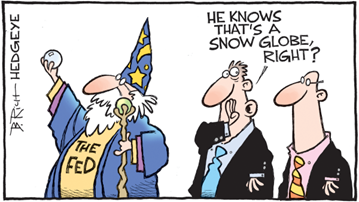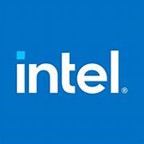Predicting changes in interest rates can be as challenging as forecasting the direction.
The interest rate burden on most companies has been especially low, but this will start to reverse over the next year. Interest expense as a percentage of debt for non-financial companies has fallen to 3.6%, the lowest ratio since the 1950s. When rates fell sharply after the pandemic, many CFOs took advantage of the environment and refinanced at lower rates while simultaneously moving into longer maturity debt. According to industry sources, in a two-year period of 2020 through 2021, over $4.2 trillion in U.S. corporate bonds were issued versus $2.7 trillion for years 2019 and 2022. Some pundits have warned that as low-rate debt matures, higher interest rates may begin to bite into earnings and lead to less healthy balance sheets.
According to S&P Global Ratings, non-financial companies in the S&P 500 have a combined $710 billion in debt coming due next year, followed by $862 billion in 2025 and $880 billion in 2026. Calbench, a financial data services firm, did an analysis of a sample of 57 companies with maturing debt in 2024. The study indicated that refinancing at 5.44% – the rate of the one-year Treasury bill in early November – could reduce earnings per share (EPS) on the sample set of companies by 2.92%. This reduction in earnings from higher interest payments has the potential to reduce profits and limit companies’ ability to invest, research and hire. Despite these concerns, however, rising interest rates have not had any discernible impact on corporate profitability to date.
Indeed, the resilience of the U.S. economy and an upswing in recent corporate earnings and expectations (82% of S&P 500 companies reported a positive earnings result in the third quarter) has been the big surprise of 2023. Company balance sheets remain mostly healthy, and unemployment remains low. Total household debt as a percentage of gross domestic product is down by a third since 2008. Further improving credit standards, mortgage borrowing has shifted to conventional 30-year fixed rate mortgages and away from floating rate mortgages. This adjustment may explain why consumer spending and the economy overall has held up relative to expectations at the onset of 2023.
There are other factors that explain why rising rates have yet to impact corporate earnings. Companies have reduced short-term borrowings such as credit facilities and commercial paper. Instead, they are relying more on long-term debt with fixed terms. The commercial paper market has contracted from $2.2 trillion in mid-2007 to approximately $1.2 trillion as of third quarter 2023. At the same time, fixed rate U.S. investment grade and high yield debt have increased with average maturities ranging from four to 10 years.
Paradoxically this year, in some cases, interest expense has fallen, despite higher interest rates at all maturities. The explanation resides with companies taking advantage of an inverted yield curve, with short-term rates above long-term rates. Companies are parking their cash balances in higher rate, short-term accounts and notes while paying lower rates on their long-term borrowings.
An active investment management discipline also can mitigate the risk of a rising level of interest rates by focusing on the strength of company balance sheets and other key variables. An important criterion for Delta is pricing power, whether a company has the flexibility to increase prices on its products and services without loss of market share if its cost inputs increase. In addition, we seek companies that exhibit positive free cash flow in which surplus funds can be used to reduce debt after funding research and development and capital expenditures for growth.
The resilience of earnings this year is another good example of the merits of buy and hold. The psychology of the markets dominates the news cycle and can cause investors to respond to volatility by exiting the markets. Trying to predict the Fed’s direction and its impact is a futile exercise. Even as we write this letter the consensus forecast by the CME Group FedWatch Tool projects twice as many cuts as the Fed itself is guiding. An obsession with acting on short-term changes in the economic outlook or markets can lead to sub-par long-term returns with taxable consequences. Instead, the focus should be on an active appraisal of individual investments, seeking long-term value where opportunities exist.
Delta Team Highlight: Chris C. Jones, CFA®
700 Colonial Road, Suite 220, Memphis, TN 38117
Financial Planning
As part of our overall scope of investment services, please reach out if you have any needs or questions relating to the financial planning area. The team has worked with a number of clients on a wide spectrum of financial planning issues and would be happy to respond to your queries.
Company Comments
Comments follow regarding common stocks of interest to clients with stock portfolios managed by Delta Asset Management. This commentary is not a recommendation to purchase or sell but a summary of Delta’s review during the quarter.
Stanley Black & Decker, Inc. { SWK }
Founded in 1843, Stanley Black & Decker is a global leader in providing hand and power tools and related accessories, as well as outdoor lawn equipment and tools. Despite its age, Stanley has experienced good growth in recent decades. The company experienced record revenue in 2022. Stanley has raised its dividend for 55 consecutive years and extended its record for the longest consecutive dividend payment among industrial companies.
Reliability and brand loyalty are important factors in the North American tool market. Customers have long memories and can be unforgiving if a manufacturer cuts corners. This brand consciousness helps Stanley in positioning with big box retailers. Retailers look for strong brands that command a premium margin and provide a broad umbrella of products to satisfy core customers. In 2022, the Tools and Storage segment of Stanley accounted for 85% of revenues and 80% of the company’s operating profit. Brand loyalty of tools is very high across markets, and many users are willing to pay a premium price for quality products.
Stanley’s battery systems can be used across dozens of power tools as well as outdoor power equipment, creating brand loyalty through high product switching costs.
Historically, Stanley has been a serial acquirer and has a successful track record of integrating over 70 acquisitions since 2004. Its major acquisitions include Black & Decker, Craftsman, and more recently Cub Cadet and Hustler, in the outdoor lawn equipment space. These acquisitions significantly broadened its product portfolio and yielded revenue and cost synergies well beyond the original expectations. Stanley is now the largest provider of hand and power tools with enormous global reach and channel access, including high growth emerging markets such as Brazil.
Today, Stanley is focused on simplifying and streamlining its operations and driving organic growth through innovation across its product portfolio. Investment in research and development is over $350 million or 2.0% of sales. As part of its reorganization, the company expects to reduce annual costs by $2 billion, of which $300 to $500 million will be invested in innovation and product support. Flex Volt and its battery system is a good example of new product innovation. Stanley’s battery systems can be used across dozens of power tools as well as outdoor power equipment, creating brand loyalty through high product switching costs.
Long-term growth prospects for Stanley are positive, including the shift toward battery-powered tools and increased construction activity driven by underbuilt housing and infrastructure build-outs. The branded tool and storage products are critically important aspects of these trends and should continue to provide strong free cash flow and good growth. Stanley will continue to invest in new product development, such as Smart Tools and higher voltage power tools, and will increase its brand support through marketing and promotional activities.
Stanley faces challenges in addition to the cyclical nature of its end markets. Chief among them is customer concentration and increasingly formidable competition. The company’s consolidated customer base and competitive markets may prevent Stanley from fully passing along rising costs in the form of price increases. Stanley has managed its big-box retail relationships well by providing quality products that draw customers to the store.
We believe Stanley can grow organically in the low single-digits. We also expect the company to continue to streamline its operations, generate higher free cash flow and strengthen its balance sheet. Based on this growth, we anticipate operating margins of around 10% over the business cycle. Given these assumptions, our valuation model indicates that the company’s stock is priced to generate an average long-term annual rate of return of approximately 11%.
Eaton, formed in 1911 as a manufacturer of truck axels, has transformed its portfolio through a stream of acquisitions in the past two decades. As a diversified global industrial company, Eaton manufactures components, systems and services that manage electrical and mechanical power. Eaton is a virtual pure play on the industrial economy, primarily selling to and providing services to original equipment manufacturers (OEMs). The company offers energy-efficient products and services in a wide variety of markets, including agriculture, data centers, military contracting, manufacturing, aviation, commercial and residential construction and healthcare. Eaton continues to position its systems and services toward less cyclical, faster growing, higher margin end markets.
Eaton is one of the leading global providers of electrical components and systems for power quality, generation, distribution and control. Eaton’s Electrical Group now accounts for 70% of total revenues. Its electrical systems have had a slower growth profile versus its industrial businesses. Going forward, we believe the electrical equipment and systems market has good growth opportunities due to the need for electrical power capacity, regulatory changes driving energy efficiency, demand for power-hungry data centers, industrial digitization such as Artificial Intelligence (AI) driving data demand and power quality and safety. In addition, Eaton should benefit from the growing demand to control power and mechanical systems remotely for electrical grids, factories and data centers. Management is also driving stronger through-the-cycle profitability and free cash flow through product line optimization, multi-year productivity plans and raising the overall level of operational excellence.
Through the years, Eaton has either innovated or acquired many forms of power management and distribution, focusing on highly engineered motors, drives and hydraulic systems used in various industrial end markets. The company’s industrial businesses (aerospace and vehicle), which make up 30% of total company revenue, are market leaders with competitive advantages, including its manufacturing scale, cost advantages and high customer switching costs. These businesses have vast installed bases that grow primarily through innovation. Eaton’s installed bases require significant customer capital investment, which leads to good recurring aftermarket revenue streams. Eaton’s aftermarket services also serve to protect long-term customer relationships.
Going forward, we believe the electrical equipment and systems market has good growth opportunities due to the need for electrical power capacity, regulatory changes driving energy efficiency, demand for power-hungry data centers, industrial digitization such as Artificial Intelligence (AI) driving data demand and power quality and safety.
Eaton, along with its industrial peers, faces some operating challenges. Some of Eaton’s domestic and international end-markets are tied to aero-space, vehicle and various commodities. A downturn in these markets will negatively impact Eaton’s earnings and return on invested capital. We believe these potential challenges to be cyclical in nature with good long-term prospects, particularly in aerospace and electric vehicles. Management’s current strategy, focused on structural cost reduction throughout the organization, should continue to lead to higher long-term operating profitability as these end-markets recover and grow.
We believe the company’s leadership position, extensive installed base, recurring aftermarket service revenues and long-term customer relationships should provide support for long-term growth and higher profitability. We expect Eaton will grow revenues mid-single digits on average with cash flow margins of 22.5% over our 10-year modeling period. Based on these assumptions, our stock valuation model indicates Eaton’s current stock price offers an average annual long-term rate of return of approximately 5%.
Intel Corporation { INTC }
Intel is the leading designer and manufacturer of microprocessors for the global personal computer (PC) and data center markets. The company supplies the computing industry with the chips, boards, systems and software that are the primary components of computer architecture. Intel pioneered the x86 architecture for microprocessors used in most PCs and data centers today. The company currently operates in two main business groups: its more mature Client Computing Group, which supplies chips for personal computing; and its Data-centric Group, which includes the more advanced and faster growing computing segments such as Internet of Things (IoT), Artificial Intelligence (AI), automotive and 5G networks.
After decades of leadership in the design and manufacture of complex chips, Intel has developed important advantages, including manufacturing scale, broad product scope and intangible assets related to its advanced intellectual property. This scaling advantage is defended by higher than peer research and development (R&D) and capital spending that enable the company to deliver a more predictable cadence of products that move, store and process data at a lower cost. Intel’s cost advantage is critical in a capital-intensive industry where large-scale manufacturing facilities, or foundries, cost $20 billion or more to build, which creates significant barriers to entry.
Intel is facing challenges both cyclical and structural, such as near-term demand weakness in PCs, increased competition and process manufacturing setbacks. Competition is Intel’s primary long-term challenge. Intel has a dominant share in PCs and x86-based servers, but recent delays in process upgrades have allowed its competitors to gain market share. In addition, some customers have begun to design their own chips to diversify their supply chain and have more control over major supply inputs. We believe the consolidated nature of the industry, limited chip manufacturing capacity globally and the years it takes to bring on new capacity make shifts in market share difficult. Intel has implemented a multi-year strategic plan to regain its footing requiring substantial investments in R&D and infrastructure, but cyclical economic activity is slowing its progress in the near term.
After decades of leadership in the design and manufacture of complex chips, Intel has developed important advantages, including manufacturing scale, broad product scope and intangible assets related to its advanced intellectual property.
Long-term prospects for the semiconductor industry remain bright. Intel has a dominant position in the mature PC space, which has modest growth expectations, but the company continues to invest to advance the business. Gaming computers and consoles, both of which rely on x86 processors for speed and reliability, continue to be a growth driver for Intel. We expect Intel to continue to benefit from the growth in cloud computing, which requires huge data center build-outs, increasing chip demand. This digitalization of everything from the technology sectors to businesses, such as industrials, health care, finance and communications, among others, creates increasing amounts of data that has to be stored, analyzed and transmitted. In addition, Intel’s more mature businesses generate the free cash flow needed to invest in faster growing areas such as IoT, AI and 5G that are still in the early innings of their development.
Maintaining a consistent cadence of technological advancements in chips is critical to Intel’s continued success. Intel hired Pat Gelsinger, a tech veteran and former CEO of VMware, as its new CEO. Prior to VMware, Gelsinger was a 30-year veteran of Intel, was the company’s first Chief Technology Officer and led 14 different microprocessor programs. An engineer with deep knowledge of the semiconductor space, he has laid out a road map to generate a faster cadence of chip advancements and surpass its chip rivals in advanced chip processes. Beyond chip advancements, Intel has launched Intel Foundry Services to manufacture chips for designers such as Advanced Micro Devices (AMD), Qualcomm and Amazon Web Services. The company recently broke ground for two new leading-edge chip factories in Ohio. The company has also announced plans to invest 80 billion euros in the European Union over the next decade – from R&D to manufacturing and distribution facilities. This new revenue stream will take years to fully develop, but it will grow Intel’s chip capacity in a time of increasing chip demand as society becomes increasingly digital over time.
Based on the financial characteristics we have modeled, we assume that Intel can average low-single digit revenue growth over the next decade. At this pace of growth and given improved process efficiency against the competitive backdrop outlined above, we believe operating margins can average approximately 20% during the period. Accordingly, our stock valuation model indicates a long-term annual rate of return of approximately 9%.
Otis Worldwide Corporation { OTIS }
Otis is the world’s largest elevator and escalator manufacturing, installation and service company. The company installs and services a wide range of passenger and freight elevators, as well as escalators and moving walkways for residential and commercial buildings and infrastructure projects. As the largest original equipment manufacturer (OEM), Otis has installed 3.5 million elevators globally. Of these, it services 1.5 million of its own brand and 500,000 of its competitors. Otis is truly a global company with over 70% of its revenues generated outside the U.S. The company operates through a global network of 69,000 employees, including sales reps, field technicians and engineers.
The company’s main competitive advantages are its global manufacturing scale and large installed base of elevators, which provide a cost advantage. Its market share and scale have been built over many decades of reliability, dependability and know-how, which are critically important to developers.
Otis’ large installed base generates high margins, recurring revenue streams from repair and maintenance services and end-of-life cycle replacements, which in turn provide good future revenue visibility.
Otis’ large installed base generates high margins, recurring revenue streams from repair and maintenance services and end-of-life cycle replacements, which in turn provide good future revenue visibility. High margin services and the aftermarket now make up nearly 60% of total company revenue and 80% of total company profitability.
Elevator installation and service is a mature industry. As a result, long-term industry growth expectations are modest; however, Otis does have advantages and investment opportunities to help drive growth, potentially above that of the industry. The global elevator fleet is aging. In Europe, where Otis dominates, over three million units are over 20 years old, which is typically when elevators need to be upgraded. As these elevators need upgrades, the company’s 94% service contract retention rate should help drive future revenue growth and maintain industry leading profit margins. In addition, Otis has increased investments in technology to leverage data and digitalization to gain market share and improve productivity. Otis’ growth in digitally connected services could increase group margins over time due to more efficient technician routes, higher retention rates and premium service rates.
One of the main operating risks for the company is to maintain pricing and retention rates in China, which are much lower than those in mature markets. Competition in China is intense regarding price. Although Otis tries to focus on the higher end portion of the Chinese market, which is more stable, overall conditions remain challenging. A decline in new construction from a higher interest rate environment has slowed new orders. Globally, the trend toward remote workers could result in more limited elevator use with less need for maintenance and repair.
Given its large market share and industry maturity, we believe Otis can grow revenue in the low single-digits annually over the next decade. At this pace, given rational competition and Otis’ expanding high margin services portfolio and operating efficiencies, we believe cash flow margins can average approximately 16% during this period. Based on these assumptions, our stock valuation model indicates Otis’ current price offers a long-term average annual rate of return of nearly 7%.
Dated: December 13, 2023
Specific securities were included for illustrative purposes based upon a summary of our review during the most recent quarter. Individual portfolios will vary in their holdings over time in relation to others. Information on other individual holdings is available upon request. The information contained herein has been obtained from sources believed to be reliable but cannot be guaranteed for accuracy. The opinions expressed are subject to change from time to time and do not constitute a recommendation to purchase or sell any security nor to engage in any particular investment strategy. Any projections are hypothetical in nature, do not reflect actual investment results and are not a guarantee of future results and are based upon certain assumptions subject to change as well as market conditions. Actual results may also vary to a material degree due to external factors beyond the scope and control of the projections and assumptions.





